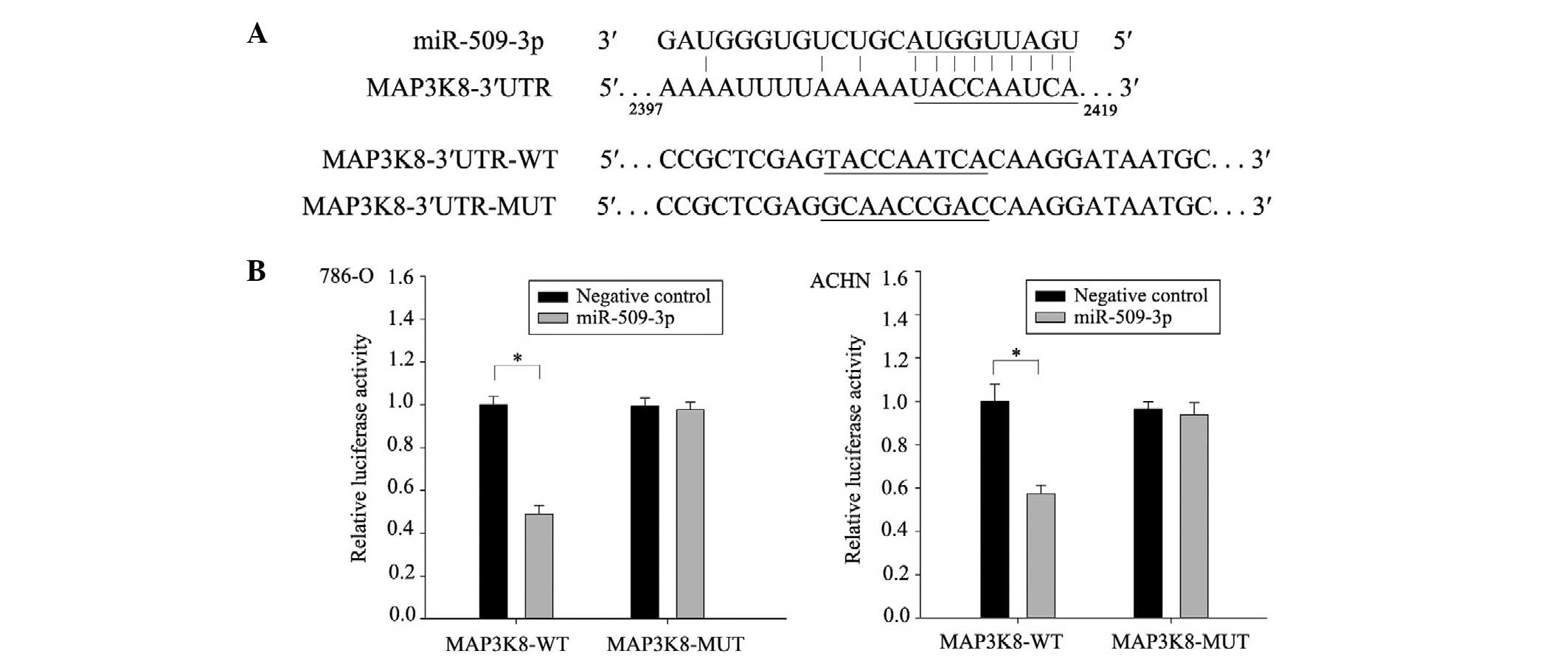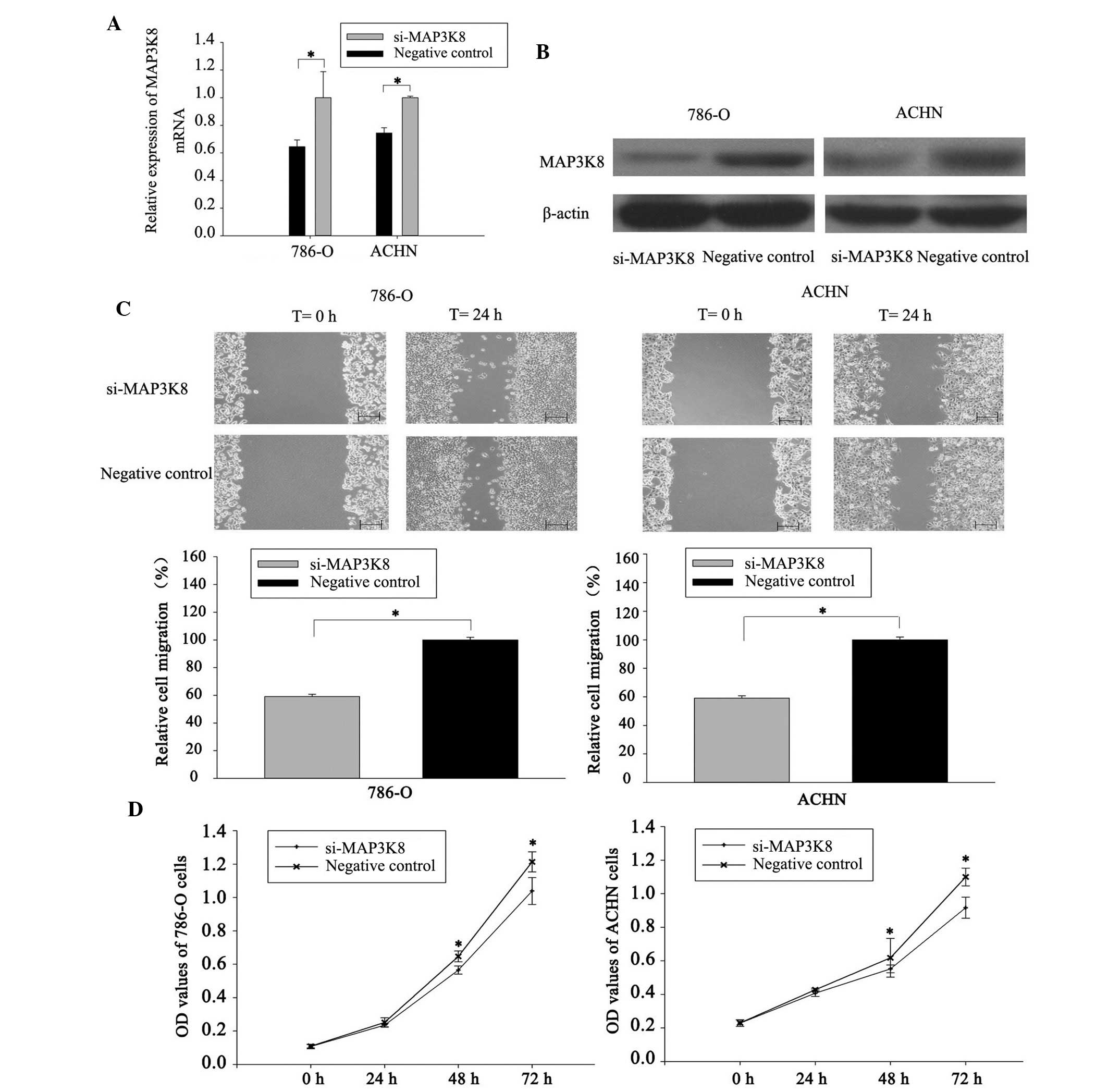|
1
|
Yamada Y, Hidaka H, Seki N, et al:
Tumor-suppressive microRNA-135a inhibits cancer cell proliferation
by targeting the c-MYC oncogene in renal cell carcinoma. Cancer
Sci. 104:304–312. 2013. View Article : Google Scholar
|
|
2
|
Mulders PF, Brouwers AH, Hulsbergen-van
der Kaa CA, van Lin EN, Osanto S and de Mulder PH: Guideline ‘Renal
cell carcinoma’. Ned Tijdschr Geneeskd. 152:376–380. 2008.in Dutch.
PubMed/NCBI
|
|
3
|
Hadoux J, Vignot S and De La Motte Rouge
T: Renal cell carcinoma: Focus on safety and efficacy of
temsirolimus. Clin Med Insights Oncol. 4:143–154. 2010. View Article : Google Scholar
|
|
4
|
Patel C, Ahmed A and Ellsworth P: Renal
cell carcinoma: A reappraisal. Urol Nurs. 32:182–190; quiz.
1912012.PubMed/NCBI
|
|
5
|
Yu ZH, Zhang Q, Wang YD, et al:
Overexpression of cyclooxygenase-1 correlates with poor prognosis
in renal cell carcinoma. Asian Pac J Cancer Prev. 14:3729–3734.
2013. View Article : Google Scholar : PubMed/NCBI
|
|
6
|
Janzen NK, Kim HL, Figlin RA and
Belldegrun AS: Surveillance after radical or partial nephrectomy
for localized renal cell carcinoma and management of recurrent
disease. Urol Clin North Am. 30:843–852. 2003. View Article : Google Scholar : PubMed/NCBI
|
|
7
|
Bouyssou JM, Manier S, Huynh D, Issa S,
Roccaro AM and Ghobrial IM: Regulation of microRNAs in cancer
metastasis. Biochim Biophys Acta. 1845:255–265. 2014.PubMed/NCBI
|
|
8
|
Xi Y: MicroRNA: A new player for cancer
chemoprevention. J Integr Oncol. 2:1052013. View Article : Google Scholar : PubMed/NCBI
|
|
9
|
Lu R, Ji Z, Li X, Zhai Q, Zhao C, Jiang Z,
Zhang S, Nie L and Yu Z: miR-145 functions as tumor suppressor and
targets two oncogenes, ANGPT2 and NEDD9, in renal cell carcinoma. J
Cancer Res Clin Oncol. 140:387–397. 2014. View Article : Google Scholar : PubMed/NCBI
|
|
10
|
Yu Z, Ni L, Chen D, et al: Identification
of miR-7 as an oncogene in renal cell carcinoma. J Mol Histol.
44:669–677. 2013. View Article : Google Scholar : PubMed/NCBI
|
|
11
|
Peng H, Luo J, Hao H, Hu J, Xie SK, Ren D
and Rao B: MicroRNA-100 regulates SW620 colorectal cancer cell
proliferation and invasion by targeting RAP1B. Oncol Rep.
31:2055–2062. 2014.PubMed/NCBI
|
|
12
|
Xie J, Chen M, Zhou J, Mo MS, Zhu LH, Liu
YP, Gui QJ, Zhang L and Li GQ: miR-7 inhibits the invasion and
metastasis of gastric cancer cells by suppressing epidermal growth
factor receptor expression. Oncol Rep. 31:1715–1722.
2014.PubMed/NCBI
|
|
13
|
Salmeron A, Ahmad TB, Carlile GW, Pappin
D, Narsimhan RP and Ley SC: Activation of MEK-1 and SEK-1 by Tpl-2
proto-oncoprotein, a novel MAP kinase kinase kinase. EMBO J.
15:817–826. 1996.PubMed/NCBI
|
|
14
|
Krcova Z, Ehrmann J, Krejci V, Eliopoulos
A and Kolar Z: Tpl-2/Cot and COX-2 in breast cancer. Biomed Pap Med
Fac Univ Palacky Olomouc Czech Repub. 152:21–25. 2008. View Article : Google Scholar : PubMed/NCBI
|
|
15
|
Jeong JH, Bhatia A, Toth Z, Oh S, Inn KS,
Liao CP, Roy-Burman P, Melamed J, Coetzee GA and Jung JU:
TPL2/COT/MAP3K8 (TPL2) activation promotes androgen
depletion-independent (ADI) prostate cancer growth. PLoS One.
6:e162052011. View Article : Google Scholar : PubMed/NCBI
|
|
16
|
Aparecida Alves C, Silva ID, Villanova FE,
Nicolau SM, Custódio MA, Bortoletto C and Gonçalves WJ:
Differential gene expression profile reveals overexpression of
MAP3K8 in invasive endometrioid carcinoma. Eur J Gynaecol Oncol.
27:589–593. 2006.
|
|
17
|
Tunca B, Tezcan G, Cecener G, et al:
Overexpression of CK20, MAP3K8 and EIF5A correlates with poor
prognosis in early-onset colorectal cancer patients. J Cancer Res
Clin Oncol. 139:691–702. 2013. View Article : Google Scholar : PubMed/NCBI
|
|
18
|
Martínez-Salamanca JI, Huang WC, Millan I,
et al: Prognostic impact of the 2009 UICC/AJCC TNM staging system
for renal cell carcinoma with venous extension. Eur Urol.
59:120–127. 2011. View Article : Google Scholar
Rini BI, Campbell SC and Escudier B: Renal
cell carcinoma. Lancet. 373:1119–1132. 2009. View Article : Google Scholar : PubMed/NCBI
|
|
19
|
Rini BI, Campbell SC and Escudier B: Renal
cell carcinoma. Lancet. 373:1119–1132. 2009. View Article : Google Scholar : PubMed/NCBI
|
|
20
|
Zhai Q, Zhou L, Zhao C, Wan J, Yu Z, Guo
X, Qin J, Chen J and Lu R: Identification of miR-508-3p and
miR-509-3p that are associated with cell invasion and migration and
involved in the apoptosis of renal cell carcinoma. Biochem Biophys
Res Commun. 419:621–626. 2012. View Article : Google Scholar : PubMed/NCBI
|
|
21
|
Li S, Fu H, Wang Y, Tie Y, Xing R, Zhu J,
Sun Z, Wei L and Zheng X: MicroRNA-101 regulates expression of the
v-fos FBJ murine osteosarcoma viral oncogene homolog (FOS) oncogene
in human hepatocellular carcinoma. Hepatology. 49:1194–1202. 2009.
View Article : Google Scholar : PubMed/NCBI
|
|
22
|
Song T, Zhang X, Wang C, Wu Y, Cai W, Gao
J and Hong B: MiR-138 suppresses expression of hypoxia-inducible
factor 1α (HIF-1α) in clear cell renal cell carcinoma 786-O cells.
Asian Pac J Cancer Prev. 12:1307–1311. 2011.
|
|
23
|
Neal CS, Michael MZ, Rawlings LH, Van der
Hoek MB and Gleadle JM: The VHL-dependent regulation of microRNAs
in renal cancer. BMC Med. 8:642010. View Article : Google Scholar : PubMed/NCBI
|
|
24
|
Saini S, Yamamura S, Majid S, Shahryari V,
Hirata H, Tanaka Y and Dahiya R: MicroRNA-708 induces apoptosis and
suppresses tumorigenicity in renal cancer cells. Cancer Res.
71:6208–6219. 2011. View Article : Google Scholar : PubMed/NCBI
|
|
25
|
Yu XY, Zhang Z, Liu J, Zhan B and Kong CZ:
MicroRNA-141 is downregulated in human renal cell carcinoma and
regulates cell survival by targeting CDC25B. Onco Targets Ther.
6:349–354. 2013.PubMed/NCBI
|
|
26
|
Johannessen CM, Boehm JS, Kim SY, et al:
COT drives resistance to RAF inhibition through MAP kinase pathway
reactivation. Nature. 468:968–972. 2010. View Article : Google Scholar : PubMed/NCBI
|
|
27
|
Kim K, Kim G, Kim JY, Yun HJ, Lim SC and
Choi HS: Interleukin-22 promotes epithelial cell transformation and
breast tumorigenesis via MAP3K8 activation. Carcinogenesis.
35:1352–1361. 2014. View Article : Google Scholar : PubMed/NCBI
|














